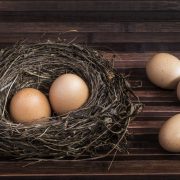Age Pension – not all assets are created equal!
Your age pension entitlement can be affected by your assets, whether you own your home, which is an exempt asset (homeowner), are renting (non-homeowner), and if you are single or a member of a couple. The following table provides an overview of the current asset thresholds and limits as at November 2019.
Assets Test threshold for the full age pension
| Status | Homeowners – assets must be less than | Non-homeowners – assets must be less than |
| Single | $263,250 | $473,750 |
| Couple | $394,500 | $605,000 |
Assets Test upper limits
| Status | Homeowners – to receive a part pension, assets must be less than | Non-homeowners – to receive a part pension, assets must be less than |
| Single | $574,500 | $785,00 |
| Couple | $863,500 | $1,074,000 |
Here are ten things to consider when you do apply for your age pension.
1. Be aware that the value of your household contents, including your motor vehicle and personal effects, is ’fire sale’ value – not the insured value or the replacement costs. The difference in the two amounts can be substantial and can have a considerable effect on your entitlement. For example, the insured value of your home contents could be $80,000 as opposed to a fire sale value of $10,000. The difference in the two asset valuations could equate to $210 per fortnight in extra age pension just by ensuring that the fire sale valuation is used.
2. Superannuation in accumulation held in a partner’s name who is under pension age is not an asset and not assessable for the purposes of the assets test when calculating your age pension entitlement.
3. Shifting assets between partners is not seen as gifting.
4. Lifetime annuities with a nil residential capital value can be very effective in increasing a person’s entitlement under both the assets test and the income test.
5. A funeral bond up to the value of $13,250 is an exempt asset. For a couple purchasing one each, the total value for an exempt asset is $26,500.
6. Pre-paid funeral expenses and burial plots are also exempt, subject to a couple of conditions – the monies cannot be refunded, there is nothing more to pay and it is a contracted payment.
7. Your home and the – (maximum of 2 hectares) land (curtilage) surrounding your property regardless of the value are exempt from the assets test.
8. Investment properties are an asset which can be reduced by the mortgage secured against the investment property. If the mortgage is secured against your own home, it will not reduce the value of the investment property.
9. Loans to family members (children) paying no interest, which you may not see as an asset, are considered an asset according to the social security legislation. Depending on the amount of money lent, this arrangement can have a detrimental effect on your entitlement, so be very careful before you agree to lending any money to family members.
10. Selling an asset to a family member for less than what it is worth can be viewed as a gift, so again be very careful. Gifting any amounts to your children in excess of $10,000 can have a negative effect on your age pension entitlement.
This is certainly not a comprehensive list of considerations and pitfalls, but it is an overview of the more common issues which do arise.
Applying for an age pension when the time comes can be a very daunting proposition.
If you are in doubt about any of the questions or the information you have supplied, make sure you talk to an expert who understands the forms and what is required so that you are able to claim your maximum entitlement.
Source: Mark Teale | Centrepoint Alliance






